Dosing & Uses
Dosage Forms & Strengths
premix, ready-to-use injection
- 250mg/50mL
- 500mg/100mL
- 750mg/150mL
oral solution
- 25mg/mL
tablet
- 250mg
- 500mg
- 750mg
Community-Acquired Pneumonia
500 mg PO/IV once daily for 7-14 days or 750 mg PO/IV once daily for 5 days
Nosocomial Pneumonia
750 mg PO/IV once daily for 7-14 days
Acute Bacterial Sinusitis
500 mg PO/IV once daily for 10-14 days or 750 mg PO/IV once daily for 5 days
Limitations-of-use: Reserve fluoroquinolones for patients who do not have other available treatment options for acute sinusitis
Acute Bacterial Exacerbation of Chronic Bronchitis
500 mg PO/IV once daily for ≥7 days
Limitations-of-use: Reserve fluoroquinolones for patients who do not have other available treatment options for acute bacterial exacerbation of chronic bronchitis
Inhalational Anthrax
Postexposure therapy
500 mg PO once daily for 60 days, beginning as soon as possible after exposure
Skin/Skin Structure Infections
Uncomplicated: 500 mg PO/IV once daily for 7-10 days
Complicated: 750 mg PO/IV once daily for 7-14 days
Chronic Bacterial Prostatitis
500 mg PO/IV once daily for 28 days
Complicated Urinary Tract Infections & Acute Pyelonephritis
250 mg PO/IV once daily for 10 days or 750 mg PO/IV once daily for 5 days
Uncomplicated Urinary Tract Infections
250 mg PO/IV once daily for 3 days
Limitations-of-use: Reserve fluoroquinolones for patients who do not have other available treatment options for uncomplicated urinary tract infections
Plague
Indicated for treatment and prophylaxis of plague, including pneumonic and septicemic plague, caused by Yersinia pestis in adults and pediatric patients, aged 6 months or older
500 mg PO/IV once daily for 10-14 days
Acne Vulgaris (Off-label)
100 mg PO q8hr for 4 weeks
Epididymitis (Off-label)
500 mg PO qDay for 10 days
Pseudomonas aeruginosa Pulmonary Infections (Orphan)
Treatment of pulmonary infections due to Pseudomonas aeruginosa and other bacteria in patients with cystic fibrosis
Orphan indication sponsor
- Mpex Pharmaceuticals, Inc, 11535 Sorrento Valley Road, San Diego, CA 92121
Dosage Modifications
Renal impairment (normal dosage, 750 mg/day)
- CrCl 20-49 mL/min: 750 mg every other day
- CrCl 10-19 mL/min or hemodialysis (HD)/peritoneal dialysis (PD): 750 mg initially, then 500 mg every other day
Renal impairment (normal dosage, 500 mg/day)
- CrCl 20-49 mL/min: 500 mg initially, then 250 mg once daily
- CrCl 10-19 mL/min or HD/PD: 500 mg initially, then 250 mg every other day
Renal impairment (normal dosage, 250 mg/day)
- CrCl 20-49 mL/min: No dosage adjustment required
- CrCl 10-19 mL/min: 250 mg every other day; no dosage adjustment required for uncomplicated urinary tract infection (UTI)
- HD/PD: No data
Dialysis
- Supplemental doses not required following hemodialysis or continuous ambulatory peritoneal dialysis (CAPD)
Dosing Considerations
Susceptible organisms
- Aeromonas hydrophila, Campylobacter jejuni, Citrobacter diversus, Citrobacter freundii, Chlamydia pneumoniae, Enterococcus faecalis, Enterobacter cloacae, Escherichia coli, Haemophilus influenzae, Haemophilus parainfluenzae, Klebsiella pneumoniae, Legionella pneumophila, Morganella morganii, Moraxella catarrhalis, Proteus mirabilis, Providencia spp, Pseudomonas aeruginosa, Serratia spp, Staphylococcus aureus, Streptococcus pneumoniae, Streptococcus pyogenes, Ureaplasma urealyticum
- First-line therapy: C jejuni, C freundii, Enterobacter spp; no unanimity on others (eg, A hydrophila, L pneumophila, M morganii)
Dosage Forms & Strengths
premix, ready-to-use injection
- 250mg/50mL
- 500mg/100mL
oral solution
- 25mg/mL
tablet
- 250mg
- 500mg
Tablets not for administration to pediatric patients with inhalational anthrax or plague who weigh <30 kg due to limitations of available strengths; alternative formulations of levofloxacin may be considered for pediatric patients who weigh <30 kg
Inhalational Anthrax
Postexposure therapy
≥6 months and <50 kg: 8 mg/kg PO q12hr for 60 days, beginning as soon as possible after exposure; individual dose not to exceed 250 mg
≥6 months and >50 kg: 500 mg PO once daily for 60 days, beginning as soon as possible after exposure
Safety in children for treatment duration >14 days has not been established
Plague
Indicated for treatment and prophylaxis of plague, including pneumonic and septicemic plague, caused by Yersinia pestis in adults and pediatric patients, aged 6 months or older
≥6 months and <50 kg: 8 mg/kg PO/IV q12hr for 10-14 days; individual dose not to exceed 250 mg
≥50 kg: 500 mg PO/IV once daily for 10-14 days
Acute Bacterial Rhinosinusitis (Off-label)
10-20 mg/kg/day PO qDay or divided q12hr
Community Acquired Pneumonia (Off-label)
S. pneumonia
- 6 months to <5 years: 8-10 mg/kg/dose PO/IV q 12 hr; not to exceed 750mg/day
- 5-16 years: 8-10 mg/kg/dose PO qDay for 10 days; not to exceed 750 mg/day
Mycoplasma pneumonia or Chlamydia
Interactions
Interaction Checker
No Results

Contraindicated
Serious - Use Alternative
Significant - Monitor Closely
Minor

Contraindicated (0)
Serious - Use Alternative (75)
- adagrasib
adagrasib, levofloxacin. Either increases effects of the other by QTc interval. Avoid or Use Alternate Drug. Each drug prolongs the QTc interval, which may increased the risk of Torsade de pointes, other serious arryhthmias, and sudden death. If coadministration unavoidable, more frequent monitoring is recommended for such patients.
- aluminum hydroxide
aluminum hydroxide decreases levels of levofloxacin by inhibition of GI absorption. Applies only to oral form of both agents. Avoid or Use Alternate Drug. Separate by 2 hours.
- aminolevulinic acid oral
aminolevulinic acid oral, levofloxacin. Either increases toxicity of the other by pharmacodynamic synergism. Avoid or Use Alternate Drug. Avoid administering other phototoxic drugs with aminolevulinic acid oral for 24 hr during perioperative period.
- aminolevulinic acid topical
levofloxacin increases toxicity of aminolevulinic acid topical by pharmacodynamic synergism. Avoid or Use Alternate Drug. Coadministration of photosensitizing drugs may enhance the phototoxic reaction to photodynamic therapy with aminolevulinic acid.
- amiodarone
amiodarone and levofloxacin both increase QTc interval. Avoid or Use Alternate Drug.
- amisulpride
amisulpride and levofloxacin both increase QTc interval. Avoid or Use Alternate Drug. ECG monitoring is recommended if coadministered.
- anagrelide
anagrelide and levofloxacin both increase QTc interval. Avoid or Use Alternate Drug.
- apomorphine
apomorphine and levofloxacin both increase QTc interval. Avoid or Use Alternate Drug.
- arsenic trioxide
arsenic trioxide and levofloxacin both increase QTc interval. Avoid or Use Alternate Drug.
- artemether
artemether and levofloxacin both increase QTc interval. Avoid or Use Alternate Drug.
- asenapine
asenapine and levofloxacin both increase QTc interval. Avoid or Use Alternate Drug.
- asenapine transdermal
asenapine transdermal and levofloxacin both increase QTc interval. Avoid or Use Alternate Drug.
- BCG vaccine live
levofloxacin decreases effects of BCG vaccine live by pharmacodynamic antagonism. Contraindicated. Wait until Abx Tx complete to administer live bacterial vaccine.
- buprenorphine
buprenorphine and levofloxacin both increase QTc interval. Avoid or Use Alternate Drug.
- buprenorphine buccal
buprenorphine buccal and levofloxacin both increase QTc interval. Avoid or Use Alternate Drug.
- buprenorphine subdermal implant
buprenorphine subdermal implant and levofloxacin both increase QTc interval. Avoid or Use Alternate Drug.
- buprenorphine, long-acting injection
buprenorphine, long-acting injection and levofloxacin both increase QTc interval. Avoid or Use Alternate Drug.
- carbonyl iron
carbonyl iron decreases levels of levofloxacin by inhibition of GI absorption. Applies only to oral form of both agents. Avoid or Use Alternate Drug.
- ceritinib
ceritinib and levofloxacin both increase QTc interval. Avoid or Use Alternate Drug.
- cholera vaccine
levofloxacin, cholera vaccine. pharmacodynamic antagonism. Avoid or Use Alternate Drug. Avoid coadministration of cholera vaccine with systemic antibiotics since these agents may be active against the vaccine strain. Do not administer cholera vaccine to patients who have received oral or parenteral antibiotics within 14 days prior to vaccination.
- desflurane
desflurane and levofloxacin both increase QTc interval. Avoid or Use Alternate Drug.
- didanosine
didanosine decreases levels of levofloxacin by inhibition of GI absorption. Applies only to oral form of both agents. Avoid or Use Alternate Drug. Applies to didanosine chewable tablets and powder for oral solution; administer 2 hr before or several hours after didanosine oral solution or chewable tablet administration.
- disopyramide
disopyramide and levofloxacin both increase QTc interval. Avoid or Use Alternate Drug.
- encorafenib
encorafenib and levofloxacin both increase QTc interval. Avoid or Use Alternate Drug.
- entrectinib
levofloxacin and entrectinib both increase QTc interval. Avoid or Use Alternate Drug.
- eribulin
eribulin and levofloxacin both increase QTc interval. Avoid or Use Alternate Drug.
- ferric maltol
ferric maltol decreases levels of levofloxacin by inhibition of GI absorption. Applies only to oral form of both agents. Avoid or Use Alternate Drug.
- ferrous fumarate
ferrous fumarate decreases levels of levofloxacin by inhibition of GI absorption. Applies only to oral form of both agents. Avoid or Use Alternate Drug.
- ferrous gluconate
ferrous gluconate decreases levels of levofloxacin by inhibition of GI absorption. Applies only to oral form of both agents. Avoid or Use Alternate Drug.
- ferrous sulfate
ferrous sulfate decreases levels of levofloxacin by inhibition of GI absorption. Applies only to oral form of both agents. Avoid or Use Alternate Drug.
- fexinidazole
fexinidazole and levofloxacin both increase QTc interval. Avoid or Use Alternate Drug. Avoid coadministration of fexinidazole with drugs known to block potassium channels and/or prolong QT interval.
- givinostat
levofloxacin and givinostat both increase QTc interval. Avoid or Use Alternate Drug. If unable to avoid coadministration, obtain ECGs when initiating, during concomitant use, and as clinically indicated. Withhold if QTc interval >500 ms or a change from baseline >60 ms.
- glasdegib
levofloxacin and glasdegib both increase QTc interval. Avoid or Use Alternate Drug. If coadministration unavoidable, monitor for increased risk of QTc interval prolongation.
- hydroxychloroquine sulfate
hydroxychloroquine sulfate and levofloxacin both increase QTc interval. Avoid or Use Alternate Drug.
- ibutilide
ibutilide and levofloxacin both increase QTc interval. Avoid or Use Alternate Drug.
- indapamide
indapamide and levofloxacin both increase QTc interval. Avoid or Use Alternate Drug.
- inotuzumab
inotuzumab and levofloxacin both increase QTc interval. Avoid or Use Alternate Drug. If unable to avoid concomitant use, obtain ECGs and electrolytes before and after initiation of any drug known to prolong QTc, and periodically monitor as clinically indicated during treatment.
- iron dextran complex
iron dextran complex decreases levels of levofloxacin by inhibition of GI absorption. Applies only to oral form of both agents. Avoid or Use Alternate Drug.
- iron sucrose
iron sucrose decreases levels of levofloxacin by inhibition of GI absorption. Applies only to oral form of both agents. Avoid or Use Alternate Drug.
- isoflurane
isoflurane and levofloxacin both increase QTc interval. Avoid or Use Alternate Drug.
- ivosidenib
ivosidenib and levofloxacin both increase QTc interval. Avoid or Use Alternate Drug. Avoid coadministration of QTc prolonging drugs with ivosidenib or replace with alternate therapies. If coadministration of a QTc prolonging drug is unavoidable, monitor for increased risk of QTc interval prolongation.
- lefamulin
lefamulin and levofloxacin both increase QTc interval. Avoid or Use Alternate Drug.
- macimorelin
macimorelin and levofloxacin both increase QTc interval. Avoid or Use Alternate Drug. Macimorelin causes an increase of ~11 msec in the corrected QT interval. Avoid coadministration with drugs that prolong QT interval, which could increase risk for developing torsade de pointes-type ventricular tachycardia. Allow sufficient washout time of drugs that are known to prolong the QT interval before administering macimorelin.
- methyl aminolevulinate
levofloxacin, methyl aminolevulinate. Either increases toxicity of the other by pharmacodynamic synergism. Avoid or Use Alternate Drug. Each drug may increase the photosensitizing effect of the other.
- microbiota oral
levofloxacin decreases effects of microbiota oral by pharmacodynamic antagonism. Avoid or Use Alternate Drug. Microbiota oral contains bacterial spores. Antibacterial agents may decrease efficacy if coadministered. Complete antibiotic regimens 2-4 days before initiating microbiota oral. .
- mobocertinib
mobocertinib and levofloxacin both increase QTc interval. Avoid or Use Alternate Drug. If coadministration unavoidable, reduce mobocertinib dose and monitor QTc interval more frequently.
- ondansetron
levofloxacin and ondansetron both increase QTc interval. Avoid or Use Alternate Drug. Avoid with congenital long QT syndrome; ECG monitoring recommended with concomitant medications that prolong QT interval, electrolyte abnormalities, CHF, or bradyarrhythmias.
- oxaliplatin
oxaliplatin and levofloxacin both increase QTc interval. Avoid or Use Alternate Drug.
- panobinostat
levofloxacin and panobinostat both increase QTc interval. Avoid or Use Alternate Drug. Panobinostat is known to significantly prolong QT interval. Panobinostat prescribing information states use with drugs known to prolong QTc is not recommended.
- pentamidine
levofloxacin and pentamidine both increase QTc interval. Avoid or Use Alternate Drug.
- pimozide
levofloxacin and pimozide both increase QTc interval. Avoid or Use Alternate Drug.
- pitolisant
levofloxacin and pitolisant both increase QTc interval. Avoid or Use Alternate Drug.
- polysaccharide iron
polysaccharide iron decreases levels of levofloxacin by inhibition of GI absorption. Applies only to oral form of both agents. Avoid or Use Alternate Drug.
- procainamide
levofloxacin and procainamide both increase QTc interval. Avoid or Use Alternate Drug.
- quinidine
quinidine and levofloxacin both increase QTc interval. Avoid or Use Alternate Drug.
- ribociclib
ribociclib increases toxicity of levofloxacin by QTc interval. Avoid or Use Alternate Drug.
- rose hips
rose hips decreases levels of levofloxacin by inhibition of GI absorption. Applies only to oral form of both agents. Avoid or Use Alternate Drug.
- saquinavir
saquinavir increases levels of levofloxacin by QTc interval. Avoid or Use Alternate Drug. Potential for increased toxicity. Increased risk of QT prolongation and cardiac arrhythmias.
- selinexor
selinexor, levofloxacin. unspecified interaction mechanism. Avoid or Use Alternate Drug. Patients treated with selinexor may experience neurological toxicities. Avoid taking selinexor with other medications that may cause dizziness or confusion.
- sevoflurane
sevoflurane and levofloxacin both increase QTc interval. Avoid or Use Alternate Drug.
- siponimod
siponimod and levofloxacin both increase QTc interval. Avoid or Use Alternate Drug.
- sodium bicarbonate
sodium bicarbonate decreases levels of levofloxacin by inhibition of GI absorption. Applies only to oral form of both agents. Avoid or Use Alternate Drug. Separate by 2 hours.
- sodium citrate/citric acid
sodium citrate/citric acid decreases levels of levofloxacin by inhibition of GI absorption. Applies only to oral form of both agents. Avoid or Use Alternate Drug. Separate by 2 hours.
- sotalol
levofloxacin and sotalol both increase QTc interval. Avoid or Use Alternate Drug.
- strontium ranelate
strontium ranelate decreases levels of levofloxacin by inhibition of GI absorption. Applies only to oral form of both agents. Contraindicated. Suspend strontium ranelate during antibiotic therapy.
- tetrabenazine
tetrabenazine and levofloxacin both increase QTc interval. Avoid or Use Alternate Drug.
- toremifene
levofloxacin and toremifene both increase QTc interval. Avoid or Use Alternate Drug. Concurrent use of toremifene with agents causing QT prolongation should be avoided. If concomitant use is required it's recommended that toremifene be interrupted. If interruption not possible, patients requiring therapy with a drug that prolongs QT should be closely monitored. ECGs should be obtained for high risk patients.
- tretinoin
levofloxacin, tretinoin. Mechanism: pharmacodynamic synergism. Avoid or Use Alternate Drug. Increased phototoxicity.
- tretinoin topical
levofloxacin, tretinoin topical. Mechanism: pharmacodynamic synergism. Avoid or Use Alternate Drug. Increased phototoxicity.
- trilaciclib
trilaciclib will decrease the level or effect of levofloxacin by Other (see comment). Avoid or Use Alternate Drug. Avoid coadministration of trilaciclib (OCT2, MATE1, and MATE-2K inhibitor) with substrates where minimal increased concentration in kidney or blood may lead to serious or life-threatening toxicities.
- typhoid vaccine live
levofloxacin decreases effects of typhoid vaccine live by pharmacodynamic antagonism. Contraindicated. Wait until Abx Tx complete to administer live bacterial vaccine.
- umeclidinium bromide/vilanterol inhaled
levofloxacin increases toxicity of umeclidinium bromide/vilanterol inhaled by QTc interval. Avoid or Use Alternate Drug. Exercise extreme caution when vilanterol coadministered with drugs that prolong QTc interval; adrenergic agonist effects on the cardiovascular system may be potentiated.
- vandetanib
levofloxacin, vandetanib. Either increases toxicity of the other by QTc interval. Avoid or Use Alternate Drug. Avoid coadministration with drugs known to prolong QT interval; if a drug known to prolong QT interval must be used, more frequent ECG monitoring is recommended.
- vemurafenib
vemurafenib and levofloxacin both increase QTc interval. Avoid or Use Alternate Drug. Concomitant use of vemurafenib with drugs that prolong QT interval is not recommended.
- vilanterol/fluticasone furoate inhaled
levofloxacin increases toxicity of vilanterol/fluticasone furoate inhaled by QTc interval. Avoid or Use Alternate Drug. Exercise extreme caution when vilanterol coadministered with drugs that prolong QTc interval; adrenergic agonist effects on the cardiovascular system may be potentiated.
Monitor Closely (214)
- acarbose
levofloxacin increases effects of acarbose by pharmacodynamic synergism. Use Caution/Monitor. Quinolone antibiotic administration may result in hyper- or hypoglycemia. Gatifloxacin is most likely to produce dysglycemia; moxifloxacin is least likely.
- albuterol
albuterol and levofloxacin both increase QTc interval. Use Caution/Monitor.
- alfuzosin
levofloxacin and alfuzosin both increase QTc interval. Use Caution/Monitor.
alfuzosin and levofloxacin both increase QTc interval. Use Caution/Monitor. - amifampridine
levofloxacin increases toxicity of amifampridine by Other (see comment). Modify Therapy/Monitor Closely. Comment: Amifampridine can cause seizures. Coadministration with drugs that lower seizure threshold may increase this risk.
- amitriptyline
amitriptyline and levofloxacin both increase QTc interval. Modify Therapy/Monitor Closely.
- amoxapine
amoxapine and levofloxacin both increase QTc interval. Modify Therapy/Monitor Closely.
- arformoterol
arformoterol and levofloxacin both increase QTc interval. Use Caution/Monitor.
- aripiprazole
aripiprazole and levofloxacin both increase QTc interval. Use Caution/Monitor.
- artemether/lumefantrine
levofloxacin and artemether/lumefantrine both increase QTc interval. Modify Therapy/Monitor Closely.
- atomoxetine
atomoxetine and levofloxacin both increase QTc interval. Use Caution/Monitor.
- bazedoxifene/conjugated estrogens
levofloxacin will decrease the level or effect of bazedoxifene/conjugated estrogens by altering intestinal flora. Applies only to oral forms of hormone. Low risk of contraceptive failure. Use Caution/Monitor.
- bedaquiline
levofloxacin and bedaquiline both increase QTc interval. Modify Therapy/Monitor Closely. ECG should be monitored closely
- betamethasone
betamethasone and levofloxacin both increase Other (see comment). Use Caution/Monitor. Coadministration of quinolone antibiotics and corticosteroids may increase risk of tendon rupture.
- buprenorphine transdermal
buprenorphine transdermal and levofloxacin both increase QTc interval. Use Caution/Monitor.
- calcium acetate
calcium acetate, levofloxacin. Either decreases levels of the other by inhibition of GI absorption. Applies only to oral form of both agents. Use Caution/Monitor. Separate by 2 hours.
- calcium carbonate
calcium carbonate, levofloxacin. Either decreases levels of the other by inhibition of GI absorption. Applies only to oral form of both agents. Use Caution/Monitor. Separate by 2 hours.
- calcium chloride
calcium chloride, levofloxacin. Either decreases levels of the other by inhibition of GI absorption. Applies only to oral form of both agents. Use Caution/Monitor. Separate by 2 hours.
- calcium citrate
calcium citrate, levofloxacin. Either decreases levels of the other by inhibition of GI absorption. Applies only to oral form of both agents. Use Caution/Monitor. Separate by 2 hours.
- calcium gluconate
calcium gluconate, levofloxacin. Either decreases levels of the other by inhibition of GI absorption. Applies only to oral form of both agents. Use Caution/Monitor. Separate by 2 hours.
- celecoxib
levofloxacin, celecoxib. Other (see comment). Modify Therapy/Monitor Closely. Comment: Risk of CNS stimulation/seizure. Mechanism: Displacement of GABA from receptors in brain.
- chloroquine
chloroquine increases toxicity of levofloxacin by QTc interval. Use Caution/Monitor.
- chlorpromazine
chlorpromazine and levofloxacin both increase QTc interval. Modify Therapy/Monitor Closely.
- chlorpropamide
levofloxacin increases effects of chlorpropamide by pharmacodynamic synergism. Use Caution/Monitor. Quinolone antibiotic administration may result in hyper- or hypoglycemia. Gatifloxacin is most likely to produce dysglycemia; moxifloxacin is least likely.
- citalopram
levofloxacin and citalopram both increase QTc interval. Use Caution/Monitor. ECG monitoring is recommended, along with drugs that may prolong the QT interval.
- clarithromycin
clarithromycin and levofloxacin both increase QTc interval. Modify Therapy/Monitor Closely.
- clomipramine
clomipramine and levofloxacin both increase QTc interval. Modify Therapy/Monitor Closely.
- clozapine
clozapine and levofloxacin both increase QTc interval. Use Caution/Monitor.
- conjugated estrogens
levofloxacin will decrease the level or effect of conjugated estrogens by altering intestinal flora. Applies only to oral forms of hormone. Low risk of contraceptive failure. Use Caution/Monitor.
- corticotropin
corticotropin and levofloxacin both increase Other (see comment). Use Caution/Monitor. Coadministration of quinolone antibiotics and corticosteroids may increase risk of tendon rupture.
- cortisone
cortisone and levofloxacin both increase Other (see comment). Use Caution/Monitor. Coadministration of quinolone antibiotics and corticosteroids may increase risk of tendon rupture.
- crizotinib
crizotinib and levofloxacin both increase QTc interval. Use Caution/Monitor. ECG monitoring is recommended, along with drugs that may prolong the QT interval.
- crofelemer
crofelemer increases levels of levofloxacin by Other (see comment). Use Caution/Monitor. Comment: Crofelemer has the potential to inhibit transporters MRP2 and OATP1A2 at concentrations expected in the gut; unlikely to inhibit systemically because minimally absorbed.
- dasatinib
dasatinib and levofloxacin both increase QTc interval. Use Caution/Monitor.
- degarelix
degarelix and levofloxacin both increase QTc interval. Use Caution/Monitor.
- desipramine
desipramine and levofloxacin both increase QTc interval. Modify Therapy/Monitor Closely.
- deutetrabenazine
deutetrabenazine and levofloxacin both increase QTc interval. Use Caution/Monitor. At the maximum recommended dose, deutetrabenazine does not prolong QT interval to a clinically relevant extent. Certain circumstances may increase risk of torsade de pointes and/or sudden death in association with drugs that prolong the QTc interval (eg, bradycardia, hypokalemia or hypomagnesemia, coadministration with other drugs that prolong QTc interval, presence of congenital QT prolongation).
- dexamethasone
dexamethasone and levofloxacin both increase Other (see comment). Use Caution/Monitor. Coadministration of quinolone antibiotics and corticosteroids may increase risk of tendon rupture.
- diclofenac
levofloxacin, diclofenac. Other (see comment). Modify Therapy/Monitor Closely. Comment: Risk of CNS stimulation/seizure. Mechanism: Displacement of GABA from receptors in brain.
- dienogest/estradiol valerate
levofloxacin will decrease the level or effect of dienogest/estradiol valerate by altering intestinal flora. Applies only to oral forms of hormone. Low risk of contraceptive failure. Use Caution/Monitor. An alternate or additional form of birth control may be advisable during concomitant use.
- diflunisal
levofloxacin, diflunisal. Other (see comment). Modify Therapy/Monitor Closely. Comment: Risk of CNS stimulation/seizure. Mechanism: Displacement of GABA from receptors in brain.
- digoxin
levofloxacin will increase the level or effect of digoxin by altering intestinal flora. Applies only to oral form of both agents. Use Caution/Monitor.
- dofetilide
dofetilide and levofloxacin both increase QTc interval. Modify Therapy/Monitor Closely.
- dolasetron
dolasetron and levofloxacin both increase QTc interval. Use Caution/Monitor.
- donepezil
donepezil and levofloxacin both increase QTc interval. Use Caution/Monitor.
- doxepin
doxepin and levofloxacin both increase QTc interval. Modify Therapy/Monitor Closely.
- dronedarone
dronedarone and levofloxacin both increase QTc interval. Modify Therapy/Monitor Closely.
- droperidol
droperidol and levofloxacin both increase QTc interval. Modify Therapy/Monitor Closely.
- efavirenz
efavirenz and levofloxacin both increase QTc interval. Use Caution/Monitor.
- eliglustat
eliglustat and levofloxacin both increase QTc interval. Use Caution/Monitor.
- eluxadoline
eluxadoline increases levels of levofloxacin by decreasing metabolism. Use Caution/Monitor. Eluxadoline may increase the systemic exposure of coadministered OATP1B1 substrates.
- epinephrine
epinephrine and levofloxacin both increase QTc interval. Modify Therapy/Monitor Closely.
- epinephrine racemic
epinephrine racemic and levofloxacin both increase QTc interval. Modify Therapy/Monitor Closely.
- erythromycin base
erythromycin base and levofloxacin both increase QTc interval. Modify Therapy/Monitor Closely.
- erythromycin ethylsuccinate
erythromycin ethylsuccinate and levofloxacin both increase QTc interval. Modify Therapy/Monitor Closely.
- erythromycin lactobionate
erythromycin lactobionate and levofloxacin both increase QTc interval. Modify Therapy/Monitor Closely.
- erythromycin stearate
erythromycin stearate and levofloxacin both increase QTc interval. Modify Therapy/Monitor Closely.
- escitalopram
escitalopram increases toxicity of levofloxacin by QTc interval. Use Caution/Monitor.
- estradiol
levofloxacin will decrease the level or effect of estradiol by altering intestinal flora. Applies only to oral forms of hormone. Low risk of contraceptive failure. Use Caution/Monitor.
- estrogens conjugated synthetic
levofloxacin will decrease the level or effect of estrogens conjugated synthetic by altering intestinal flora. Applies only to oral forms of hormone. Low risk of contraceptive failure. Use Caution/Monitor.
- estropipate
levofloxacin will decrease the level or effect of estropipate by altering intestinal flora. Applies only to oral forms of hormone. Low risk of contraceptive failure. Use Caution/Monitor.
- ethinylestradiol
levofloxacin will decrease the level or effect of ethinylestradiol by altering intestinal flora. Applies only to oral forms of hormone. Low risk of contraceptive failure. Use Caution/Monitor.
- ethotoin
levofloxacin decreases effects of ethotoin by unknown mechanism. Use Caution/Monitor. There are also case reports of quinolones increasing phenytoin levels.
- etodolac
levofloxacin, etodolac. Other (see comment). Modify Therapy/Monitor Closely. Comment: Risk of CNS stimulation/seizure. Mechanism: Displacement of GABA from receptors in brain.
- ezogabine
ezogabine, levofloxacin. Either increases toxicity of the other by QTc interval. Use Caution/Monitor. Slight and transient QT-prolongation observed with ezogabine, particularly when dose titrated to 1200 mg/day. QT interval should be monitored when ezogabine is prescribed with agents known to increase QT interval.
- fennel
fennel decreases levels of levofloxacin by inhibition of GI absorption. Applies only to oral form of both agents. Use Caution/Monitor.
- fenoprofen
levofloxacin, fenoprofen. Other (see comment). Modify Therapy/Monitor Closely. Comment: Risk of CNS stimulation/seizure. Mechanism: Displacement of GABA from receptors in brain.
- ferric citrate
ferric citrate will decrease the level or effect of levofloxacin by drug binding in GI tract. Use Caution/Monitor. Administer at least 2 hours before or after ferric citrate
- fingolimod
fingolimod and levofloxacin both increase QTc interval. Use Caution/Monitor.
- flecainide
flecainide and levofloxacin both increase QTc interval. Use Caution/Monitor.
- fluconazole
fluconazole and levofloxacin both increase QTc interval. Modify Therapy/Monitor Closely.
- fludrocortisone
fludrocortisone and levofloxacin both increase Other (see comment). Use Caution/Monitor. Coadministration of quinolone antibiotics and corticosteroids may increase risk of tendon rupture.
- fluoxetine
fluoxetine and levofloxacin both increase QTc interval. Use Caution/Monitor.
- fluphenazine
fluphenazine and levofloxacin both increase QTc interval. Modify Therapy/Monitor Closely.
- flurbiprofen
levofloxacin, flurbiprofen. Other (see comment). Modify Therapy/Monitor Closely. Comment: Risk of CNS stimulation/seizure. Mechanism: Displacement of GABA from receptors in brain.
- fluvoxamine
fluvoxamine and levofloxacin both increase QTc interval. Use Caution/Monitor.
- formoterol
formoterol and levofloxacin both increase QTc interval. Modify Therapy/Monitor Closely.
- foscarnet
foscarnet and levofloxacin both increase QTc interval. Use Caution/Monitor.
- fosphenytoin
levofloxacin decreases effects of fosphenytoin by unknown mechanism. Use Caution/Monitor. There are also case reports of quinolones increasing phenytoin levels.
- fostemsavir
levofloxacin and fostemsavir both increase QTc interval. Use Caution/Monitor. QTc prolongation reported with higher than recommended doses of fostemsavir.
- gadobenate
gadobenate and levofloxacin both increase QTc interval. Use Caution/Monitor.
- gemtuzumab
levofloxacin and gemtuzumab both increase QTc interval. Use Caution/Monitor.
- gepirone
gepirone and levofloxacin both increase QTc interval. Modify Therapy/Monitor Closely.
- gilteritinib
gilteritinib and levofloxacin both increase QTc interval. Use Caution/Monitor.
- glimepiride
levofloxacin increases effects of glimepiride by pharmacodynamic synergism. Use Caution/Monitor. Quinolone antibiotic administration may result in hyper- or hypoglycemia. Gatifloxacin is most likely to produce dysglycemia; moxifloxacin is least likely.
- glipizide
levofloxacin increases effects of glipizide by pharmacodynamic synergism. Use Caution/Monitor. Quinolone antibiotic administration may result in hyper- or hypoglycemia. Gatifloxacin is most likely to produce dysglycemia; moxifloxacin is least likely.
- glyburide
levofloxacin increases effects of glyburide by pharmacodynamic synergism. Use Caution/Monitor. Quinolone antibiotic administration may result in hyper- or hypoglycemia. Gatifloxacin is most likely to produce dysglycemia; moxifloxacin is least likely.
- goserelin
goserelin increases toxicity of levofloxacin by QTc interval. Use Caution/Monitor. Increases risk of torsades de pointes.
- granisetron
granisetron and levofloxacin both increase QTc interval. Use Caution/Monitor.
- haloperidol
haloperidol and levofloxacin both increase QTc interval. Modify Therapy/Monitor Closely.
- histrelin
histrelin increases toxicity of levofloxacin by QTc interval. Use Caution/Monitor. Increases risk of torsades de pointes.
- hydrocortisone
hydrocortisone and levofloxacin both increase Other (see comment). Use Caution/Monitor. Coadministration of quinolone antibiotics and corticosteroids may increase risk of tendon rupture.
- hydrocortisone rectal
hydrocortisone rectal and levofloxacin both increase Other (see comment). Use Caution/Monitor. Coadministration of quinolone antibiotics and corticosteroids may increase risk of tendon rupture.
- hydroxyzine
hydroxyzine and levofloxacin both increase QTc interval. Use Caution/Monitor.
- ibuprofen
levofloxacin, ibuprofen. Other (see comment). Modify Therapy/Monitor Closely. Comment: Risk of CNS stimulation/seizure. Mechanism: Displacement of GABA from receptors in brain.
- ibuprofen IV
levofloxacin, ibuprofen IV. Other (see comment). Modify Therapy/Monitor Closely. Comment: Risk of CNS stimulation/seizure. Mechanism: Displacement of GABA from receptors in brain.
- iloperidone
iloperidone and levofloxacin both increase QTc interval. Use Caution/Monitor.
- imipramine
imipramine and levofloxacin both increase QTc interval. Modify Therapy/Monitor Closely.
- indacaterol, inhaled
indacaterol, inhaled, levofloxacin. QTc interval. Use Caution/Monitor. Drugs that are known to prolong the QTc interval may have an increased the risk of ventricular arrhythmias.
- indomethacin
levofloxacin, indomethacin. Other (see comment). Modify Therapy/Monitor Closely. Comment: Risk of CNS stimulation/seizure. Mechanism: Displacement of GABA from receptors in brain.
- insulin aspart
levofloxacin increases effects of insulin aspart by pharmacodynamic synergism. Use Caution/Monitor. Quinolone antibiotic administration may result in hyper- or hypoglycemia. Gatifloxacin is most likely to produce dysglycemia; moxifloxacin is least likely.
- insulin detemir
levofloxacin increases effects of insulin detemir by pharmacodynamic synergism. Use Caution/Monitor. Quinolone antibiotic administration may result in hyper- or hypoglycemia. Gatifloxacin is most likely to produce dysglycemia; moxifloxacin is least likely.
- insulin glargine
levofloxacin increases effects of insulin glargine by pharmacodynamic synergism. Use Caution/Monitor. Quinolone antibiotic administration may result in hyper- or hypoglycemia. Gatifloxacin is most likely to produce dysglycemia; moxifloxacin is least likely.
- insulin glulisine
levofloxacin increases effects of insulin glulisine by pharmacodynamic synergism. Use Caution/Monitor. Quinolone antibiotic administration may result in hyper- or hypoglycemia. Gatifloxacin is most likely to produce dysglycemia; moxifloxacin is least likely.
- insulin lispro
levofloxacin increases effects of insulin lispro by pharmacodynamic synergism. Use Caution/Monitor. Quinolone antibiotic administration may result in hyper- or hypoglycemia. Gatifloxacin is most likely to produce dysglycemia; moxifloxacin is least likely.
- insulin NPH
levofloxacin increases effects of insulin NPH by pharmacodynamic synergism. Use Caution/Monitor. Quinolone antibiotic administration may result in hyper- or hypoglycemia. Gatifloxacin is most likely to produce dysglycemia; moxifloxacin is least likely.
- insulin regular human
levofloxacin increases effects of insulin regular human by pharmacodynamic synergism. Use Caution/Monitor. Quinolone antibiotic administration may result in hyper- or hypoglycemia. Gatifloxacin is most likely to produce dysglycemia; moxifloxacin is least likely.
- ketoconazole
ketoconazole and levofloxacin both increase QTc interval. Modify Therapy/Monitor Closely.
- ketoprofen
levofloxacin, ketoprofen. Other (see comment). Modify Therapy/Monitor Closely. Comment: Risk of CNS stimulation/seizure. Mechanism: Displacement of GABA from receptors in brain.
- ketorolac
levofloxacin, ketorolac. Other (see comment). Modify Therapy/Monitor Closely. Comment: Risk of CNS stimulation/seizure. Mechanism: Displacement of GABA from receptors in brain.
- ketorolac intranasal
levofloxacin, ketorolac intranasal. Other (see comment). Modify Therapy/Monitor Closely. Comment: Risk of CNS stimulation/seizure. Mechanism: Displacement of GABA from receptors in brain.
- lanthanum carbonate
lanthanum carbonate decreases levels of levofloxacin by cation binding in GI tract. Use Caution/Monitor. Administer oral quinolone antibiotics at least 1 hr before or 4 hr after lanthanum. Interaction applies only to oral quinolones.
- lapatinib
lapatinib and levofloxacin both increase QTc interval. Use Caution/Monitor.
- lenvatinib
levofloxacin and lenvatinib both increase QTc interval. Use Caution/Monitor. Lenvatinib prescribing information recommends monitoring ECG closely when coadministered with QT prolonging drugs.
- leuprolide
leuprolide increases toxicity of levofloxacin by QTc interval. Use Caution/Monitor. Increases risk of torsades de pointes.
- levoketoconazole
levoketoconazole and levofloxacin both increase QTc interval. Modify Therapy/Monitor Closely.
- levonorgestrel oral/ethinylestradiol/ferrous bisglycinate
levofloxacin will decrease the level or effect of levonorgestrel oral/ethinylestradiol/ferrous bisglycinate by altering intestinal flora. Applies only to oral forms of hormone. Low risk of contraceptive failure. Use Caution/Monitor. Antibiotics may decrease hormonal contraceptive efficacy.
- lithium
lithium and levofloxacin both increase QTc interval. Use Caution/Monitor.
- lofepramine
lofepramine and levofloxacin both increase QTc interval. Modify Therapy/Monitor Closely.
- lumefantrine
levofloxacin and lumefantrine both increase QTc interval. Modify Therapy/Monitor Closely.
- magnesium chloride
magnesium chloride decreases levels of levofloxacin by inhibition of GI absorption. Applies only to oral form of both agents. Use Caution/Monitor. Separate by 2 hours.
- magnesium citrate
magnesium citrate decreases levels of levofloxacin by inhibition of GI absorption. Applies only to oral form of both agents. Use Caution/Monitor. Separate by 2 hours.
- magnesium hydroxide
magnesium hydroxide decreases levels of levofloxacin by inhibition of GI absorption. Applies only to oral form of both agents. Use Caution/Monitor. Separate by 2 hours.
- magnesium oxide
magnesium oxide decreases levels of levofloxacin by inhibition of GI absorption. Applies only to oral form of both agents. Use Caution/Monitor. Separate by 2 hours.
- magnesium sulfate
magnesium sulfate decreases levels of levofloxacin by inhibition of GI absorption. Applies only to oral form of both agents. Use Caution/Monitor. Separate by 2 hours.
- magnesium supplement
magnesium supplement will decrease the level or effect of levofloxacin by Other (see comment). Modify Therapy/Monitor Closely. Formation of an insoluble complex reduces absorption of the drug through intestinal tract; administer magnesium 2hr before the quinolone or 2hr after the quinolone
- maprotiline
maprotiline and levofloxacin both increase QTc interval. Modify Therapy/Monitor Closely.
- meclofenamate
levofloxacin, meclofenamate. Other (see comment). Modify Therapy/Monitor Closely. Comment: Risk of CNS stimulation/seizure. Mechanism: Displacement of GABA from receptors in brain.
- mefenamic acid
levofloxacin, mefenamic acid. Other (see comment). Modify Therapy/Monitor Closely. Comment: Risk of CNS stimulation/seizure. Mechanism: Displacement of GABA from receptors in brain.
- meloxicam
levofloxacin, meloxicam. Other (see comment). Modify Therapy/Monitor Closely. Comment: Risk of CNS stimulation/seizure. Mechanism: Displacement of GABA from receptors in brain.
- mestranol
levofloxacin will decrease the level or effect of mestranol by altering intestinal flora. Applies only to oral forms of hormone. Low risk of contraceptive failure. Use Caution/Monitor.
- metformin
levofloxacin increases effects of metformin by pharmacodynamic synergism. Use Caution/Monitor. Quinolone antibiotic administration may result in hyper- or hypoglycemia. Gatifloxacin is most likely to produce dysglycemia; moxifloxacin is least likely.
- methadone
levofloxacin and methadone both increase QTc interval. Use Caution/Monitor.
- methylprednisolone
methylprednisolone and levofloxacin both increase Other (see comment). Use Caution/Monitor. Coadministration of quinolone antibiotics and corticosteroids may increase risk of tendon rupture.
- mifepristone
mifepristone, levofloxacin. QTc interval. Modify Therapy/Monitor Closely. Use alternatives if available.
- miglitol
levofloxacin increases effects of miglitol by pharmacodynamic synergism. Use Caution/Monitor. Quinolone antibiotic administration may result in hyper- or hypoglycemia. Gatifloxacin is most likely to produce dysglycemia; moxifloxacin is least likely.
- mirtazapine
mirtazapine and levofloxacin both increase QTc interval. Use Caution/Monitor.
- mometasone inhaled
mometasone inhaled and levofloxacin both increase Other (see comment). Use Caution/Monitor. Coadministration of quinolone antibiotics and corticosteroids may increase risk of tendon rupture.
- moxifloxacin
levofloxacin and moxifloxacin both increase QTc interval. Modify Therapy/Monitor Closely.
- nabumetone
levofloxacin, nabumetone. Other (see comment). Modify Therapy/Monitor Closely. Comment: Risk of CNS stimulation/seizure. Mechanism: Displacement of GABA from receptors in brain.
- naproxen
levofloxacin, naproxen. Other (see comment). Modify Therapy/Monitor Closely. Comment: Risk of CNS stimulation/seizure. Mechanism: Displacement of GABA from receptors in brain.
- nateglinide
levofloxacin increases effects of nateglinide by pharmacodynamic synergism. Use Caution/Monitor. Quinolone antibiotic administration may result in hyper- or hypoglycemia. Gatifloxacin is most likely to produce dysglycemia; moxifloxacin is least likely.
- nilotinib
levofloxacin and nilotinib both increase QTc interval. Modify Therapy/Monitor Closely.
- nortriptyline
nortriptyline and levofloxacin both increase QTc interval. Modify Therapy/Monitor Closely.
- octreotide
levofloxacin and octreotide both increase QTc interval. Modify Therapy/Monitor Closely.
- octreotide (Antidote)
levofloxacin and octreotide (Antidote) both increase QTc interval. Modify Therapy/Monitor Closely.
- ofloxacin
levofloxacin and ofloxacin both increase QTc interval. Use Caution/Monitor.
- olanzapine
olanzapine and levofloxacin both increase QTc interval. Use Caution/Monitor.
- olanzapine/samidorphan
levofloxacin will increase the level or effect of olanzapine/samidorphan by affecting hepatic enzyme CYP1A2 metabolism. Modify Therapy/Monitor Closely. Consider decreasing olanzapine dose if coadminstered with strong 1A2 inhibitors.
- olodaterol inhaled
levofloxacin and olodaterol inhaled both increase QTc interval. Use Caution/Monitor. Drugs that prolong the QTc interval and may potentiate the effects of beta2 agonists on the cardiovascular system; increased risk of ventricular arrhythmias
- osilodrostat
osilodrostat and levofloxacin both increase QTc interval. Use Caution/Monitor.
- osimertinib
osimertinib and levofloxacin both increase QTc interval. Use Caution/Monitor. Conduct periodic monitoring with ECGs and electrolytes in patients taking drugs known to prolong the QTc interval.
- oxaliplatin
oxaliplatin will increase the level or effect of levofloxacin by Other (see comment). Use Caution/Monitor. Monitor for ECG changes if therapy is initiated in patients with drugs known to prolong QT interval.
- oxaprozin
levofloxacin, oxaprozin. Other (see comment). Modify Therapy/Monitor Closely. Comment: Risk of CNS stimulation/seizure. Mechanism: Displacement of GABA from receptors in brain.
- ozanimod
ozanimod and levofloxacin both increase QTc interval. Modify Therapy/Monitor Closely. The potential additive effects on heart rate, treatment with ozanimod should generally not be initiated in patients who are concurrently treated with QT prolonging drugs with known arrhythmogenic properties.
- paliperidone
levofloxacin and paliperidone both increase QTc interval. Use Caution/Monitor.
- paroxetine
levofloxacin and paroxetine both increase QTc interval. Use Caution/Monitor.
- pasireotide
levofloxacin and pasireotide both increase QTc interval. Modify Therapy/Monitor Closely.
- perphenazine
perphenazine and levofloxacin both increase QTc interval. Modify Therapy/Monitor Closely.
- phenytoin
levofloxacin decreases effects of phenytoin by unknown mechanism. Use Caution/Monitor. There are also case reports of quinolones increasing phenytoin levels.
- pioglitazone
levofloxacin increases effects of pioglitazone by pharmacodynamic synergism. Use Caution/Monitor. Quinolone antibiotic administration may result in hyper- or hypoglycemia. Gatifloxacin is most likely to produce dysglycemia; moxifloxacin is least likely.
- piroxicam
levofloxacin, piroxicam. Other (see comment). Modify Therapy/Monitor Closely. Comment: Risk of CNS stimulation/seizure. Mechanism: Displacement of GABA from receptors in brain.
- posaconazole
levofloxacin and posaconazole both increase QTc interval. Use Caution/Monitor.
- prednisolone
prednisolone and levofloxacin both increase Other (see comment). Use Caution/Monitor. Coadministration of quinolone antibiotics and corticosteroids may increase risk of tendon rupture.
- prednisone
prednisone and levofloxacin both increase Other (see comment). Use Caution/Monitor. Coadministration of quinolone antibiotics and corticosteroids may increase risk of tendon rupture.
- primaquine
primaquine and levofloxacin both increase QTc interval. Use Caution/Monitor.
- prochlorperazine
prochlorperazine and levofloxacin both increase QTc interval. Modify Therapy/Monitor Closely.
- promazine
promazine and levofloxacin both increase QTc interval. Modify Therapy/Monitor Closely.
- promethazine
promethazine and levofloxacin both increase QTc interval. Modify Therapy/Monitor Closely.
- protriptyline
protriptyline and levofloxacin both increase QTc interval. Modify Therapy/Monitor Closely.
- quetiapine
quetiapine, levofloxacin. Either increases toxicity of the other by QTc interval. Use Caution/Monitor. Avoid use with drugs that prolong QT and in patients with risk factors for prolonged QT interval. Postmarketing cases show QT prolongation with overdose in patients with concomitant illness or with drugs known to cause electrolyte imbalance or prolong QT.
- quinine
levofloxacin and quinine both increase QTc interval. Use Caution/Monitor.
- quizartinib
quizartinib, levofloxacin. Either increases effects of the other by QTc interval. Modify Therapy/Monitor Closely. Monitor patients more frequently with ECG if coadministered with QT prolonging drugs.
- ranolazine
levofloxacin and ranolazine both increase QTc interval. Use Caution/Monitor.
- repaglinide
levofloxacin increases effects of repaglinide by pharmacodynamic synergism. Use Caution/Monitor. Quinolone antibiotic administration may result in hyper- or hypoglycemia. Gatifloxacin is most likely to produce dysglycemia; moxifloxacin is least likely.
- rilpivirine
rilpivirine increases toxicity of levofloxacin by QTc interval. Use Caution/Monitor. Rilpivirine should be used with caution when co-administered with a drug with a known risk of Torsades de Pointes.
- risperidone
levofloxacin and risperidone both increase QTc interval. Use Caution/Monitor.
- romidepsin
levofloxacin and romidepsin both increase QTc interval. Use Caution/Monitor.
- rosiglitazone
levofloxacin increases effects of rosiglitazone by pharmacodynamic synergism. Use Caution/Monitor. Quinolone antibiotic administration may result in hyper- or hypoglycemia. Gatifloxacin is most likely to produce dysglycemia; moxifloxacin is least likely.
- saxagliptin
levofloxacin increases effects of saxagliptin by pharmacodynamic synergism. Use Caution/Monitor. Quinolone antibiotic administration may result in hyper- or hypoglycemia. Gatifloxacin is most likely to produce dysglycemia; moxifloxacin is least likely.
- selpercatinib
selpercatinib increases toxicity of levofloxacin by QTc interval. Use Caution/Monitor.
- sertraline
sertraline and levofloxacin both increase QTc interval. Use Caution/Monitor.
- sitagliptin
levofloxacin increases effects of sitagliptin by pharmacodynamic synergism. Use Caution/Monitor. Quinolone antibiotic administration may result in hyper- or hypoglycemia. Gatifloxacin is most likely to produce dysglycemia; moxifloxacin is least likely.
- sodium picosulfate/magnesium oxide/anhydrous citric acid
levofloxacin decreases effects of sodium picosulfate/magnesium oxide/anhydrous citric acid by altering metabolism. Use Caution/Monitor. Coadministration with antibiotics decreases efficacy by altering colonic bacterial flora needed to convert sodium picosulfate to active drug.
sodium picosulfate/magnesium oxide/anhydrous citric acid decreases levels of levofloxacin by cation binding in GI tract. Use Caution/Monitor. Take at least 2 hours before and not less than 6 hours after administration of sodium picosulfate, magnesium oxide and anhydrous citric acid to avoid magnesium chelation. - sodium sulfate/?magnesium sulfate/potassium chloride
sodium sulfate/?magnesium sulfate/potassium chloride decreases levels of levofloxacin by inhibition of GI absorption. Applies only to oral form of both agents. Modify Therapy/Monitor Closely. Administer fluoroquinolones at least 2 hr before and no less than 6 hr after each dose to avoid chelation with magnesium. .
- sodium sulfate/potassium sulfate/magnesium sulfate
sodium sulfate/potassium sulfate/magnesium sulfate decreases levels of levofloxacin by inhibition of GI absorption. Applies only to oral form of both agents. Modify Therapy/Monitor Closely. Administer fluoroquinolones at least 2 hr before and no less than 6 hr after each dose to avoid chelation with magnesium. .
- sorafenib
sorafenib and levofloxacin both increase QTc interval. Use Caution/Monitor.
- sucralfate
sucralfate decreases levels of levofloxacin by inhibition of GI absorption. Applies only to oral form of both agents. Use Caution/Monitor.
- sulfamethoxazole
sulfamethoxazole and levofloxacin both increase QTc interval. Use Caution/Monitor.
- sulindac
levofloxacin, sulindac. Other (see comment). Modify Therapy/Monitor Closely. Comment: Risk of CNS stimulation/seizure. Mechanism: Displacement of GABA from receptors in brain.
- sunitinib
sunitinib and levofloxacin both increase QTc interval. Use Caution/Monitor.
- tacrolimus
tacrolimus and levofloxacin both increase QTc interval. Use Caution/Monitor.
- telavancin
levofloxacin and telavancin both increase QTc interval. Use Caution/Monitor.
- thioridazine
thioridazine and levofloxacin both increase QTc interval. Modify Therapy/Monitor Closely.
- tolazamide
levofloxacin increases effects of tolazamide by pharmacodynamic synergism. Use Caution/Monitor. Quinolone antibiotic administration may result in hyper- or hypoglycemia. Gatifloxacin is most likely to produce dysglycemia; moxifloxacin is least likely.
- tolbutamide
levofloxacin increases effects of tolbutamide by pharmacodynamic synergism. Use Caution/Monitor. Quinolone antibiotic administration may result in hyper- or hypoglycemia. Gatifloxacin is most likely to produce dysglycemia; moxifloxacin is least likely.
- tolmetin
levofloxacin, tolmetin. Other (see comment). Modify Therapy/Monitor Closely. Comment: Risk of CNS stimulation/seizure. Mechanism: Displacement of GABA from receptors in brain.
- trazodone
trazodone and levofloxacin both increase QTc interval. Modify Therapy/Monitor Closely.
- triamcinolone acetonide injectable suspension
triamcinolone acetonide injectable suspension and levofloxacin both increase Other (see comment). Use Caution/Monitor. Coadministration of quinolone antibiotics and corticosteroids may increase risk of tendon rupture.
- triclabendazole
triclabendazole and levofloxacin both increase QTc interval. Use Caution/Monitor.
- trifluoperazine
trifluoperazine and levofloxacin both increase QTc interval. Modify Therapy/Monitor Closely.
- trimagnesium citrate anhydrous
trimagnesium citrate anhydrous decreases levels of levofloxacin by inhibition of GI absorption. Applies only to oral form of both agents. Use Caution/Monitor. Multivalent cation-containing products may reduce bioavailability of quinolones; administer quinolone at least 2 hr before or 6 hr after magnesium; use alternatives if available.
- trimethoprim
levofloxacin and trimethoprim both increase QTc interval. Use Caution/Monitor.
- trimipramine
trimipramine and levofloxacin both increase QTc interval. Modify Therapy/Monitor Closely.
- triptorelin
triptorelin increases toxicity of levofloxacin by QTc interval. Use Caution/Monitor. Increases risk of torsades de pointes.
- tropisetron
levofloxacin and tropisetron both increase QTc interval. Use Caution/Monitor.
- valbenazine
valbenazine and levofloxacin both increase QTc interval. Use Caution/Monitor.
- venlafaxine
levofloxacin and venlafaxine both increase QTc interval. Use Caution/Monitor.
- vildagliptin
levofloxacin increases effects of vildagliptin by pharmacodynamic synergism. Use Caution/Monitor. Quinolone antibiotic administration may result in hyper- or hypoglycemia. Gatifloxacin is most likely to produce dysglycemia; moxifloxacin is least likely.
- voclosporin
voclosporin, levofloxacin. Either increases effects of the other by QTc interval. Use Caution/Monitor.
- voriconazole
levofloxacin and voriconazole both increase QTc interval. Use Caution/Monitor.
- vorinostat
vorinostat and levofloxacin both increase QTc interval. Use Caution/Monitor.
- warfarin
levofloxacin increases effects of warfarin by unspecified interaction mechanism. Use Caution/Monitor.
- zinc
zinc will decrease the level or effect of levofloxacin by cation binding in GI tract. Modify Therapy/Monitor Closely. Administer oral levofloxacin 2 hr before or after administration of polyvalent cation containing products.
- ziprasidone
levofloxacin and ziprasidone both increase QTc interval. Modify Therapy/Monitor Closely.
Minor (35)
- aceclofenac
levofloxacin, aceclofenac. Other (see comment). Minor/Significance Unknown. Comment: Risk of CNS stimulation/seizure. Mechanism: Displacement of GABA from receptors in brain.
- acemetacin
levofloxacin, acemetacin. Other (see comment). Minor/Significance Unknown. Comment: Risk of CNS stimulation/seizure. Mechanism: Displacement of GABA from receptors in brain.
- alprazolam
levofloxacin increases levels of alprazolam by decreasing metabolism. Minor/Significance Unknown.
- azithromycin
azithromycin and levofloxacin both increase QTc interval. Minor/Significance Unknown.
- balsalazide
levofloxacin will decrease the level or effect of balsalazide by altering intestinal flora. Applies only to oral form of both agents. Minor/Significance Unknown.
- biotin
levofloxacin will decrease the level or effect of biotin by altering intestinal flora. Applies only to oral form of both agents. Minor/Significance Unknown.
- chlordiazepoxide
levofloxacin increases levels of chlordiazepoxide by decreasing metabolism. Minor/Significance Unknown.
- choline magnesium trisalicylate
levofloxacin, choline magnesium trisalicylate. Other (see comment). Minor/Significance Unknown. Comment: Risk of CNS stimulation/seizure. Mechanism: Displacement of GABA from receptors in brain.
- clonazepam
levofloxacin increases levels of clonazepam by decreasing metabolism. Minor/Significance Unknown.
- clorazepate
levofloxacin increases levels of clorazepate by decreasing metabolism. Minor/Significance Unknown.
- estazolam
levofloxacin increases levels of estazolam by decreasing metabolism. Minor/Significance Unknown.
- fenbufen
levofloxacin, fenbufen. Other (see comment). Minor/Significance Unknown. Comment: Risk of CNS stimulation/seizure. Mechanism: Displacement of GABA from receptors in brain.
- flurazepam
levofloxacin increases levels of flurazepam by decreasing metabolism. Minor/Significance Unknown.
- foscarnet
levofloxacin, foscarnet. Mechanism: unknown. Minor/Significance Unknown. Risk of tonic clonic seizure.
- green tea
levofloxacin increases levels of green tea by decreasing elimination. Minor/Significance Unknown. (Caffeine). Some quinolones can inhibit the hepatic clearance of caffeine. Caution is advised.
- isotretinoin
levofloxacin, isotretinoin. Mechanism: pharmacodynamic synergism. Minor/Significance Unknown. Increased phototoxicity.
- itraconazole
itraconazole and levofloxacin both increase QTc interval. Minor/Significance Unknown.
- loprazolam
levofloxacin increases levels of loprazolam by decreasing metabolism. Minor/Significance Unknown.
- lorazepam
levofloxacin increases levels of lorazepam by decreasing metabolism. Minor/Significance Unknown.
- lormetazepam
levofloxacin increases levels of lormetazepam by decreasing metabolism. Minor/Significance Unknown.
- lornoxicam
levofloxacin, lornoxicam. Other (see comment). Minor/Significance Unknown. Comment: Risk of CNS stimulation/seizure. Mechanism: Displacement of GABA from receptors in brain.
- midazolam
levofloxacin increases levels of midazolam by decreasing metabolism. Minor/Significance Unknown.
- oxazepam
levofloxacin increases levels of oxazepam by decreasing metabolism. Minor/Significance Unknown.
- pantothenic acid
levofloxacin will decrease the level or effect of pantothenic acid by altering intestinal flora. Applies only to oral form of both agents. Minor/Significance Unknown.
- parecoxib
levofloxacin, parecoxib. Other (see comment). Minor/Significance Unknown. Comment: Risk of CNS stimulation/seizure. Mechanism: Displacement of GABA from receptors in brain.
- pazopanib
levofloxacin and pazopanib both increase QTc interval. Minor/Significance Unknown.
- pyridoxine
levofloxacin will decrease the level or effect of pyridoxine by altering intestinal flora. Applies only to oral form of both agents. Minor/Significance Unknown.
- pyridoxine (Antidote)
levofloxacin will decrease the level or effect of pyridoxine (Antidote) by altering intestinal flora. Applies only to oral form of both agents. Minor/Significance Unknown.
- quazepam
levofloxacin increases levels of quazepam by decreasing metabolism. Minor/Significance Unknown.
- quercetin
quercetin decreases effects of levofloxacin by pharmacodynamic antagonism. Minor/Significance Unknown.
- salicylates (non-asa)
levofloxacin, salicylates (non-asa). Other (see comment). Minor/Significance Unknown. Comment: Risk of CNS stimulation/seizure. Mechanism: Displacement of GABA from receptors in brain.
- temazepam
levofloxacin increases levels of temazepam by decreasing metabolism. Minor/Significance Unknown.
- thiamine
levofloxacin will decrease the level or effect of thiamine by altering intestinal flora. Applies only to oral form of both agents. Minor/Significance Unknown.
- tolfenamic acid
levofloxacin, tolfenamic acid. Other (see comment). Minor/Significance Unknown. Comment: Risk of CNS stimulation/seizure. Mechanism: Displacement of GABA from receptors in brain.
- triazolam
levofloxacin increases levels of triazolam by decreasing metabolism. Minor/Significance Unknown.
Adverse Effects
1-10%
Nausea (7%)
Headache (6%)
Diarrhea (5%)
Insomnia (4%)
Constipation (3%)
Dizziness (3%)
Dyspepsia (2%)
Rash (2%)
Vomiting (2%)
Chest pain (1%)
Dyspnea (1%)
Edema (1%)
Fatigue (1%)
Injection-site reaction (1%)
Moniliasis (1%)
Pain (1%)
Pruritus (1%)
Vaginitis (1%)
<1%
Cardiac: Cardiac arrest, palpitation, ventricular tachycardia, arrhythmia
Nervous system: Tremor, convulsions, paresthesia, vertigo, hypertonia, hyperkinesias, abnormal gait, somnolence, syncope
Metabolic: Hypoglycemia, hyperglycemia, hyperkalemia
Blood/lymphatic system: Anemia, thrombocytopenia, granulocytopenia
Musculoskeletal/connective tissue: Arthralgia, tendonitis, myalgia, skeletal pain
Gastrointestinal (GI): Gastritis, stomatitis, pancreatitis, esophagitis, gastroenteritis, glossitis, pseudomembranous/C difficile colitis
Hepatobiliary: Abnormal hepatic function, increased hepatic enzymes, increased alkaline phosphatase
Psychiatric: Anxiety, agitation, confusion, depression, hallucinations, nightmares, sleep disorder, anorexia, abnormal dreaming
Other: Immune hypersensitivity reaction, acute renal failure, urticaria, phlebitis, epistaxis
Postmarketing Reports
Cardiac: Prolonged QT interval, torsades de pointes, tachycardia
Vascular disorders: Aortic aneurysm and dissection
Musculoskeletal/connective tissue: Tendon rupture, muscle injury, rhabdomyolysis
Skin/subcutaneous tissue: Stevens-Johnson syndrome, toxic epidermal necrolysis, erythema multiforme, photosensitivity/phototoxicity, leukocytoclastic vasculitis
Renal and urinary disorders: Interstitial nephritis
Vascular disorders: Vasodilation; increased risk of aortic aneurysm and dissection
Blood/lymphatic system: Pancytopenia, aplastic anemia, leukopenia, hemolytic anemia, eosinophilia
Hepatobiliary: Hepatic failure, hepatitis, jaundice
Psychiatric: Psychosis, paranoia, suicidal ideation, isolated reports of suicide attempts
Nervous system: Exacerbation of myasthenia gravis, anosmia, ageusia, parosmia, dysgeusia, peripheral neuropathy, abnormal electroencephalogram (EEG), dysphonia, isolated reports of encephalopathy, pseudotumor cerebri
Central nervous system effects (hallucinations, anxiety, depression, insomnia, severe headaches, and confusion)
Respiratory, thoracic and mediastinal disorders: Isolated reports of allergic pneumonitis
Immune system disorders: Hypersensitivity reactions, sometimes fatal including: anaphylactic/anaphylactoid reactions, anaphylactic shock, angioneurotic edema, serum sickness
Eye disorders: Uveitis, vision disturbance (including diplopia), visual acuity reduced, vision blurred, scotoma
Otologic: Hypoacusis, tinnitus
General disorders and administration site conditions: Multiorgan failure, pyrexia
Warnings
Black Box Warnings
Serious adverse effects and limitations-of-use
- Both oral and injectable fluoroquinolones are associated with disabling side effects involving tendons, muscles, joints, nerves and the central nervous system
- Fluoroquinolones have been associated with disabling and potentially irreversible serious adverse reactions that have occurred together including: tendinitis and tendon rupture, peripheral neuropathy, and CNS effects
- Discontinue the drug immediately and avoid use of systemic fluoroquinolones in patients who experience any of these serious adverse reactions
- These side effects can occur hours to weeks after exposure to fluoroquinolones and may potentially be permanent
May exacerbate muscle weakness in patients with myasthenia gravis; fluoroquinolones should be avoided in patients with known history of myasthenia gravis
Because the risk of these serious side effects generally outweighs the benefits for patients with acute bacterial sinusitis, acute exacerbation of chronic bronchitis, and uncomplicated UTIs, that fluoroquinolones should be reserved for use in patients with these conditions who have no alternative treatment options
For some serious bacterial infections, including anthrax, plague, and bacterial pneumonia among others, the benefits of fluoroquinolones outweigh the risks and it is appropriate for them to remain available as a therapeutic option
Contraindications
Documented hypersensitivity
Cautions
Anaphylactic reactions and allergic skin reactions, serious, occasionally fatal, may occur after first dose
Use caution in hematologic and renal toxicities
Hepatotoxicity reported with therapy
Peripheral neuropathy: Sensory or sensorimotor axonal polyneuropathy affecting small and/or large axons resulting in paresthesias, hypoesthesias, dysesthesias, and weakness reported; peripheral neuropathy may occur rapidly after initiating and may potentially become permanent
Commonly seen adverse reactions include tendinitis, tendon rupture, arthralgia, myalgia, peripheral neuropathy, and central nervous system effects (hallucinations, anxiety, depression, insomnia, severe headaches, and confusion); these reactions can occur within hours to weeks after starting therapy, including in patients of any age or without pre-existing risk factors; discontinue therapy immediately at first signs or symptoms of any serious adverse reaction; in addition, avoid use of fluoroquinolones, in patients who have experienced any serious adverse reactions associated with fluoroquinolones
Risk of developing fluoroquinolone-associated tendinitis and tendon rupture is increased in patients over 60 years of age, in patients taking corticosteroid drugs, and in patients with kidney, heart or lung transplants; other factors that may independently increase risk of tendon rupture include strenuous physical activity, renal failure, and previous tendon disorders such as rheumatoid arthritis (see Black Box Warnings)
Excessive sunlight may result in moderate-to-severe phototoxicity
Fatal hypoglycemia reported in elderly patients with or without diabetes; prompt treatment when symptoms are present is essential
May cause C difficile-associated colitis
Prolonged use may result in fungal or bacterial superinfection
Prolongation of QT interval and isolated cases of torsades de pointes; avoid use in patients with known QT prolongation, those with hypokalemia, and those taking other QT-prolonging drugs
May produce false-positive urine opiate screens
In prolonged therapy, perform periodic evaluations of organ system function (eg, renal, hepatic, hematopoietic); adjust dosage in renal impairment; superinfections may occur with prolonged or repeated antibiotic therapy
Pediatric patients may experience increased incidence of musculoskeletal disorders (eg, arthralgia, arthritis, tendinopathy, gait abnormality)
Acute onset of retinal detachment increased 4.5-fold with oral fluoroquinolones in a single case-controlled study - JAMA 2012;307(13):1414-1419; another study disputes these findings (relative risk, 1.29) - JAMA 2013;310(20):2184-2190
Clostridium difficile-associated diarrhea (CDAD) has been reported; if CDAD suspected or confirmed, ongoing antibiotic use not directed against C. difficile may need to be discontinued; appropriate fluid and electrolyte management, protein supplementation, antibiotic treatment of C. difficile, and surgical evaluation should be instituted as clinically indicated
Prescribing antibiotics in absence of a proven or strongly suspected bacterial infection or a prophylactic indication is unlikely to provide benefit to patient and increases risk of development of drug-resistant bacteria
CNS effects
- Fluoroquinolones have been associated with an increased risk of CNS effects, including: convulsions, increased intracranial pressure (including pseudotumor cerebri), and toxic psychosis
- May also cause CNS events including: nervousness, agitation, insomnia, anxiety, nightmares, paranoia, dizziness, confusion, tremors, hallucinations, depression, and psychotic reactions have progressed to suicidal ideations/thoughts and self-injurious behavior such as attempted or completed suicide; reactions may occur following the first dose; advise patients to inform their healthcare provider immediately if these reactions occur, discontinue treatment, and institute appropriate care
- Fluoroquinolone are also known to trigger seizures or lower the seizure threshold; use with caution in epileptic patients and patients with known or suspected CNS disorders that may predispose to seizures or lower the seizure threshold (eg, severe cerebral arteriosclerosis, previous history of convulsion, reduced cerebral blood flow, altered brain structure, or stroke), or in the presence of other risk factors that may predispose to seizures or lower the seizure threshold (eg, certain drug therapy, renal dysfunction)
FDA MedWatch Safety Alert
- Issued 12-20-2018
- Increase in rate of aortic aneurysm and dissection reported within two months following use of fluoroquinolones, particularly in elderly patients
- May occur with fluoroquinolones for systemic use (IV or PO)
- Patients who have an aortic aneurysm or are at risk for an aortic aneurysm (eg, patients with peripheral atherosclerotic vascular diseases, hypertension, certain genetic conditions [eg, Marfan syndrome, Ehlers-Danlos syndrome], elderly patients)
- Prescribe fluoroquinolones to these patients only when no other treatment options are available
- Advise patients to seek immediate medical treatment for any symptoms associated with aortic aneurysm
- Stop treatment immediately if a patient reports side effects suggestive of aortic aneurysm or dissection
FDA MedWatch Safety Alert
- Issued July 10, 2018
- The FDA is strengthening the current warnings in the prescribing information for fluoroquinolone antibiotics to inform clinicians of significant decreases in blood glucose and certain mental health adverse effects
- Hypoglycemia, sometimes resulting in coma, occurred more frequently in elderly patients or in diabetic patients taking oral hypoglycemic medicine or insulin
- Alert patients regarding hypoglycemic symptoms and carefully monitor blood glucose levels; instruct patients how to treat themselves if symptoms of hypoglycemia occur
- This safety alert affects only systemic formulations; early signs and symptoms of low blood glucose include confusion, dizziness, feeling shaky, unusual hunger, headaches, irritability, pounding heart or very fast pulse, pale skin, sweating, trembling, weakness, and/or unusual anxiety
- Mental health side effects are to be added to or updated across all the fluoroquinolones are disturbances in attention, disorientation, agitation, nervousness, memory impairment, and delirium
- Inform patients of the potential risk of psychiatric adverse reactions that can occur after just 1 dose
- Immediately discontinue treatment if CNS adverse effects occur, including psychiatric adverse reactions, or blood glucose disturbances occur and switch to a nonfluoroquinolone antibiotic if possible
Pregnancy & Lactation
Pregnancy
Levofloxacin has not been shown to increase risk of major birth defects, miscarriage or adverse maternal or fetal outcomes
Animal data
- Oral administration to pregnant rats and rabbits during organogenesis at doses up to 9.4 times and 1.1 times the maximum recommended human dose (MRHD), respectively, did not result in teratogenicity; fetal toxicity reported in the rat study, but absent at doses up to 1.2 times maximum recommended human dose
Lactation
Drug is present in human milk following intravenous and oral administration; there is no information regarding effects on milk production or breastfed infant; because of potential risks of serious adverse reactions, in breastfed infants, a lactating woman may consider pumping and discarding breast milk during treatment and an additional two days (five half-lives) after last dose
Alternatively, advise a lactating woman that breastfeeding is not recommended during treatment and for an additional two days (five half-lives) after last dose
For inhalation anthrax (post-exposure), during an incident resulting in exposure to anthrax, risk-benefit assessment of continuing breastfeeding while the mother (and potentially the infant) is (are) on this drug may be acceptable
Pregnancy Categories
A: Generally acceptable. Controlled studies in pregnant women show no evidence of fetal risk.
B: May be acceptable. Either animal studies show no risk but human studies not available or animal studies showed minor risks and human studies done and showed no risk. C: Use with caution if benefits outweigh risks. Animal studies show risk and human studies not available or neither animal nor human studies done. D: Use in LIFE-THREATENING emergencies when no safer drug available. Positive evidence of human fetal risk. X: Do not use in pregnancy. Risks involved outweigh potential benefits. Safer alternatives exist. NA: Information not available.Pharmacology
Mechanism of Action
L-stereoisomer of parent compound ofloxacin; D-isomer form is inactive
Inhibits DNA gyrase activity, which in turn promotes breakage of DNA strands
Good monotherapy with extended coverage against Pseudomonas spp, as well as excellent activity against pneumococcus
Absorption
Well absorbed
Bioavailability: 99%
Peak serum time: 1-2 hr
Distribution
Cerebrospinal fluid (CSF) concentrations ~15% of serum levels; high concentrations achieved in prostate, gynecologic tissues, sinus, breast milk, saliva
Vd: 74-112 L
Metabolism
Limited metabolism in humans
Elimination
Half-life: 6-8 hr
Excretion: Urine (primarily as unchanged drug); after oral administration, 87% is recovered as unchanged drug in urine within 48 hr, and <4% is recovered in feces in 72 hr
Administration
Oral Administration
Administer without regard to food
Oral solution should be taken 1 hour before or 2 hours after eating
IV Incompatibilities
Y-site: Acyclovir, alprostadil, furosemide, heparin, indomethacin, insulin (at 100 U/mL + 5 mg/mL levofloxacin), nitroglycerin, propofol, sodium nitroprusside
IV Compatibilities
Additive: Linezolid
Y-site: Amikacin, aminophylline, ampicillin, bivalirudin, caffeine, cefotaxime, cimetidine, clindamycin, dexamethasone, dexmedetomidine, dobutamine, dopamine, epinephrine, fenoldopam, fentanyl, gentamicin, lactated hetastarch, insulin (at 1 U/mL + 5 mg/mL levofloxacin), isoproterenol, lidocaine, linezolid, lorazepam, metoclopramide, oxacillin, pancuronium, penicillin G sodium, phenobarbital, phenylephrine, sodium bicarbonate, vancomycin
IV Preparation
Premixed: No further preparation needed
Single-use vials: Dilute in 50-100 mL D5W or NS or D5/NS solution for injection to 5 mg/mL; alternative solutions include sodium lactate, Plasma-Lyte, D5/lactated Ringer, D5/NS and potassium chloride
Reconstituted solution should be clear, slightly yellow, and free of particulate matter
Reconstituted drug is stable for 72 hours at room temperature, 14 days when refrigerated in plastic containers, and 6 months when frozen
Thaw at room temperature or in refrigerator only
IV Administration
Give by IV infusion only, not bolus; rapid or bolus administration has been associated with hypotension and must be avoided
Infuse 250-500 mg over 60 minutes or 750 mg over 90 minutes
Avoid using IV line with solution containing multivalent cations (ie, magnesium, calcium)
Compatible with potassium additives
Images
| BRAND | FORM. | UNIT PRICE | PILL IMAGE |
|---|---|---|---|
| levofloxacin oral - | 250 mg tablet |  | |
| levofloxacin oral - | 750 mg tablet | 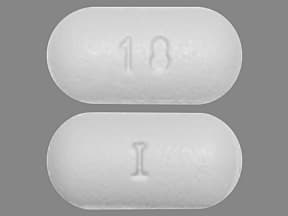 | |
| levofloxacin oral - | 500 mg tablet | 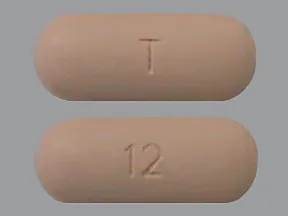 | |
| levofloxacin oral - | 750 mg tablet | 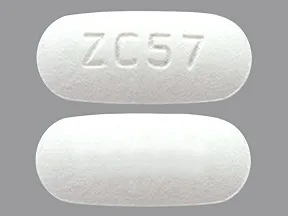 | |
| levofloxacin oral - | 500 mg tablet | 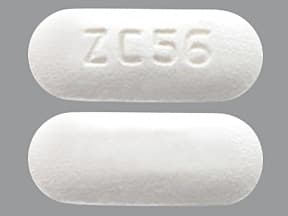 | |
| levofloxacin oral - | 250 mg tablet | 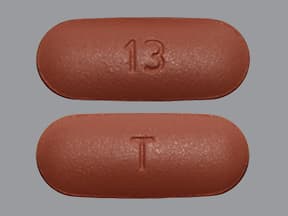 | |
| levofloxacin oral - | 500 mg tablet | 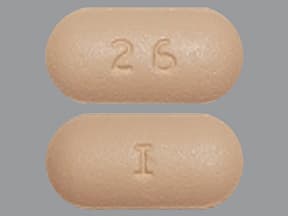 | |
| levofloxacin oral - | 250 mg/10 mL solution |  | |
| levofloxacin oral - | 500 mg tablet | 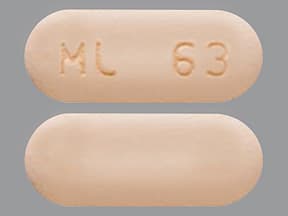 | |
| levofloxacin oral - | 750 mg tablet | 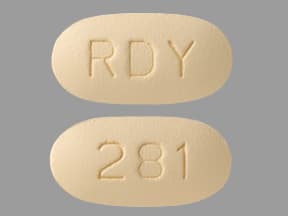 | |
| levofloxacin oral - | 500 mg tablet | 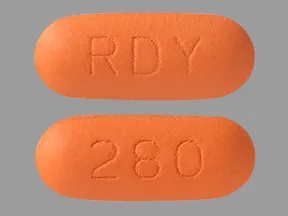 | |
| levofloxacin oral - | 250 mg tablet | 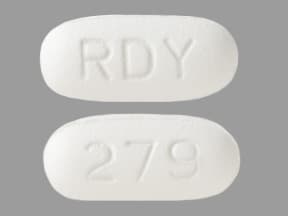 | |
| levofloxacin oral - | 500 mg tablet | 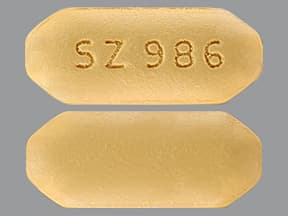 | |
| levofloxacin oral - | 500 mg tablet |  | |
| levofloxacin oral - | 750 mg tablet | 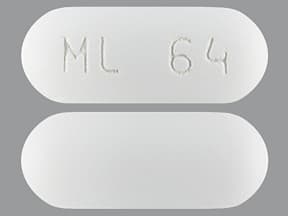 | |
| levofloxacin oral - | 750 mg tablet |  | |
| levofloxacin oral - | 250 mg/10 mL solution | 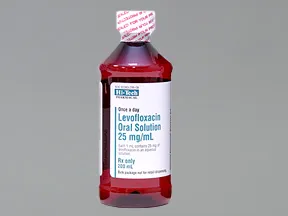 | |
| levofloxacin oral - | 250 mg tablet | 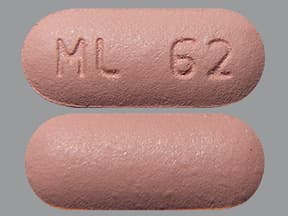 | |
| levofloxacin oral - | 500 mg tablet | 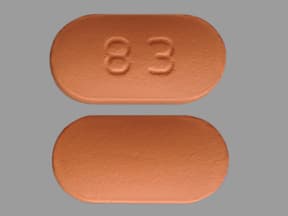 | |
| levofloxacin oral - | 250 mg/10 mL solution | 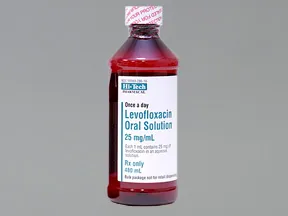 | |
| levofloxacin oral - | 750 mg tablet | 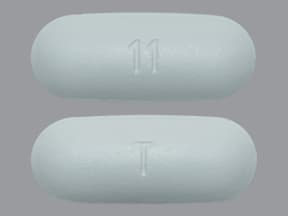 | |
| levofloxacin oral - | 250 mg tablet |  | |
| levofloxacin oral - | 250 mg tablet | 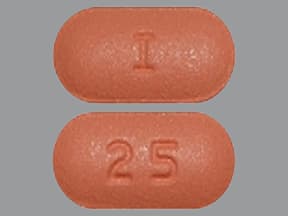 | |
| levofloxacin oral - | 250 mg/10 mL solution |  | |
| levofloxacin oral - | 250 mg/10 mL solution |  | |
| levofloxacin oral - | 250 mg/10 mL solution |  | |
| levofloxacin oral - | 250 mg/10 mL solution | 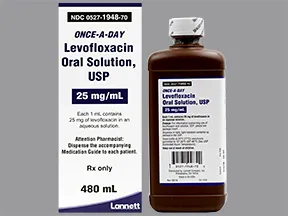 | |
| levofloxacin oral - | 250 mg/10 mL solution | 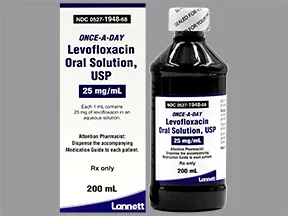 | |
| levofloxacin oral - | 250 mg/10 mL solution | 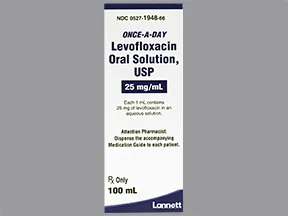 | |
| levofloxacin oral - | 500 mg tablet |  | |
| levofloxacin intravenous - | 25 mg/mL vial |  | |
| levofloxacin intravenous - | 25 mg/mL vial |  | |
| levofloxacin intravenous - | 25 mg/mL vial |  | |
| levofloxacin intravenous - | 25 mg/mL vial |  | |
| levofloxacin intravenous - | 25 mg/mL vial |  | |
| levofloxacin intravenous - | 25 mg/mL vial |  | |
| levofloxacin ophthalmic (eye) - | 0.5 % drops | 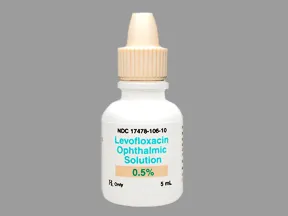 |
Copyright © 2010 First DataBank, Inc.
Patient Handout
levofloxacin oral
LEVOFLOXACIN SOLUTION - ORAL
(LEE-voe-FLOX-a-sin)
COMMON BRAND NAME(S): Levaquin
WARNING: Quinolone antibiotics (including levofloxacin) may cause serious and possibly permanent tendon damage (such as tendonitis, tendon rupture), nerve problems in the arms and legs (peripheral neuropathy), and nervous system problems. Get medical help right away if you have any of the following symptoms: pain/numbness/burning/tingling/weakness in your arms/hands/legs/feet, changes in how you sense touch/pain/temperature/vibration/body position, severe/lasting headache, vision changes, shaking (tremors), seizures, mental/mood changes (such as agitation, anxiety, confusion, hallucinations, depression, rare thoughts of suicide).Tendon damage may occur during or after treatment with this medication. Stop exercising, rest, and get medical help right away if you develop joint/muscle/tendon pain or swelling. Your risk for tendon problems is greater if you are over 60 years of age, if you are taking corticosteroids (such as prednisone), or if you have a kidney, heart, or lung transplant.This medication may make a certain muscle condition (myasthenia gravis) worse. Tell your doctor right away if you have new or worsening muscle weakness (such as drooping eyelids, unsteady walk) or trouble breathing.Discuss the risks and benefits with your doctor before using this medication.
USES: Levofloxacin is used to treat a variety of bacterial infections. This medication belongs to a class of drugs known as quinolone antibiotics. It works by stopping the growth of bacteria.This antibiotic treats only bacterial infections. It will not work for viral infections (such as common cold, flu). Using any antibiotic when it is not needed can cause it to not work for future infections.
HOW TO USE: Read the Medication Guide provided by your pharmacist before you start taking levofloxacin and each time you get a refill. If you have any questions, ask your doctor or pharmacist.Take this medication by mouth as directed by your doctor, usually once daily. Take this medication on an empty stomach (1 hour before or 2 hours after eating). Drink plenty of fluids while taking this medication unless otherwise directed by your doctor.Take this medication at least 2 hours before or 2 hours after taking other products that may make it work less well. Some examples include: quinapril, sucralfate, vitamins/minerals (including iron, zinc), and products that contain magnesium, aluminum, or calcium (such as antacids, didanosine solution, calcium-enriched juice). Ask your pharmacist about all the products you take.Carefully measure the dose using a special measuring device/spoon. Do not use a household spoon because you may not get the correct dose.The dosage and length of treatment are based on your medical condition and response to treatment. In children, the dosage is also based on weight.For the best effect, take this antibiotic at evenly spaced times. To help you remember, take this medication at the same time every day.Continue to take this medication until the full prescribed amount is finished, even if symptoms disappear after a few days. Stopping the medication too early may result in a return of the infection.Tell your doctor if your condition lasts or gets worse.
SIDE EFFECTS: See also Warning section.Nausea, diarrhea, headache, dizziness, lightheadedness, or trouble sleeping may occur. If any of these effects last or get worse, tell your doctor or pharmacist promptly.Remember that this medication has been prescribed because your doctor has judged that the benefit to you is greater than the risk of side effects. Many people using this medication do not have serious side effects.Tell your doctor right away if you have any serious side effects, including: unusual bruising/bleeding, signs of kidney problems (such as change in the amount of urine), signs of liver problems (such as nausea/vomiting that doesn't stop, loss of appetite, stomach/abdominal pain, yellowing eyes/skin, dark urine).Get medical help right away if you have any very serious side effects, including: chest pain, severe dizziness, fainting, fast/irregular heartbeat, signs of a tear/break in the main blood vessel called the aorta (such as sudden/severe pain in the stomach/chest/back, shortness of breath).This medication may rarely cause a severe intestinal condition due to a bacteria called C. difficile. This condition may occur during treatment or weeks to months after treatment has stopped. Tell your doctor right away if you develop: diarrhea that doesn't stop, abdominal or stomach pain/cramping, blood/mucus in your stool.If you have these symptoms, do not use anti-diarrhea or opioid products because they may make symptoms worse.Use of this medication for prolonged or repeated periods may result in oral thrush or a new yeast infection. Contact your doctor if you notice white patches in your mouth, a change in vaginal discharge, or other new symptoms.A very serious allergic reaction to this drug is rare. However, get medical help right away if you notice any symptoms of a serious allergic reaction, including: rash, itching/swelling (especially of the face/tongue/throat), severe dizziness, trouble breathing.This is not a complete list of possible side effects. If you notice other effects not listed above, contact your doctor or pharmacist.In the US -Call your doctor for medical advice about side effects. You may report side effects to FDA at 1-800-FDA-1088 or at www.fda.gov/medwatch.In Canada - Call your doctor for medical advice about side effects. You may report side effects to Health Canada at 1-866-234-2345.
PRECAUTIONS: Before taking levofloxacin, tell your doctor or pharmacist if you are allergic to it; or to other quinolone antibiotics (such as ciprofloxacin, moxifloxacin, ofloxacin); or if you have any other allergies. This product may contain inactive ingredients, which can cause allergic reactions or other problems. Talk to your pharmacist for more details.Before using this medication, tell your doctor or pharmacist your medical history, especially of: diabetes, joint/tendon problems (such as tendonitis, bursitis), kidney problems, mental/mood disorders (such as depression), a certain muscle condition (myasthenia gravis), nerve problems (such as peripheral neuropathy), seizure disorder, blood vessel problems (such as aneurysm or blockage of the aorta or other blood vessels, hardening of the arteries), high blood pressure, certain genetic conditions (Marfan syndrome, Ehlers-Danlos syndrome).Levofloxacin may cause a condition that affects the heart rhythm (QT prolongation). QT prolongation can rarely cause serious (rarely fatal) fast/irregular heartbeat and other symptoms (such as severe dizziness, fainting) that need medical attention right away.The risk of QT prolongation may be increased if you have certain medical conditions or are taking other drugs that may cause QT prolongation. Before using levofloxacin, tell your doctor or pharmacist of all the drugs you take and if you have any of the following conditions: certain heart problems (heart failure, slow heartbeat, QT prolongation in the EKG), family history of certain heart problems (QT prolongation in the EKG, sudden cardiac death).Low levels of potassium or magnesium in the blood may also increase your risk of QT prolongation. This risk may increase if you use certain drugs (such as diuretics/"water pills") or if you have conditions such as severe sweating, diarrhea, or vomiting. Talk to your doctor about using levofloxacin safely.Levofloxacin may rarely cause serious changes in blood sugar, especially if you have diabetes. Watch for symptoms of high blood sugar such as increased thirst/urination. Also watch for symptoms of low blood sugar such as sudden sweating, shaking, fast heartbeat, hunger, blurred vision, dizziness, or tingling hands/feet. It is a good habit to carry glucose tablets or gel to treat low blood sugar. If you don't have these reliable forms of glucose, rapidly raise your blood sugar by eating a quick source of sugar such as table sugar, honey, or candy, or by drinking fruit juice or non-diet soda. Tell your doctor right away about the reaction and the use of this product. To help prevent low blood sugar, eat meals on a regular schedule, and no not skip meals. Your doctor may need to switch you to another antibiotic or adjust your diabetes medications if any reaction occurs.This drug may make you dizzy or lightheaded. Alcohol or marijuana (cannabis) can make you more dizzy. Do not drive, use machinery, or do anything that needs alertness until you can do it safely. Limit alcoholic beverages. Talk to your doctor if you are using marijuana (cannabis).This medication may make you more sensitive to the sun. Limit your time in the sun. Avoid tanning booths and sunlamps. Use sunscreen and wear protective clothing when outdoors. Tell your doctor right away if you get sunburned or have skin blisters/redness.Levofloxacin may cause live bacterial vaccines (such as typhoid vaccine) to not work well. Tell your health care professional that you are using levofloxacin before having any immunizations/vaccinations.Before having surgery, tell your doctor or dentist about all the products you use (including prescription drugs, nonprescription drugs, and herbal products).Children may be at greater risk for joint/tendon problems while using this drug. Discuss the risks and benefits with the doctor.Older adults may be at greater risk for tendon problems (especially if they are also taking corticosteroids such as prednisone or hydrocortisone), QT prolongation, and a sudden tear/break in the main blood vessel (aorta).During pregnancy, this medication should be used only when clearly needed. Discuss the risks and benefits with your doctor.This drug passes into breast milk. Consult your doctor before breastfeeding.
DRUG INTERACTIONS: See also How to Use section.Drug interactions may change how your medications work or increase your risk for serious side effects. This document does not contain all possible drug interactions. Keep a list of all the products you use (including prescription/nonprescription drugs and herbal products) and share it with your doctor and pharmacist. Do not start, stop, or change the dosage of any medicines without your doctor's approval.A product that may interact with this drug is: strontium.Levofloxacin is very similar to ofloxacin. Do not use medications containing ofloxacin while using levofloxacin.This medication may interfere with certain lab tests (such as urine screening for opiates), possibly causing false test results. Make sure lab personnel and all your doctors know you use this drug.
OVERDOSE: If someone has overdosed and has serious symptoms such as passing out or trouble breathing, call 911. Otherwise, call a poison control center right away. US residents can call their local poison control center at 1-800-222-1222. Canada residents can call a provincial poison control center. Symptoms of overdose may include: severe dizziness.
NOTES: Do not share this medication with others.This medication has been prescribed for your current condition only. Do not use it later for another infection unless your doctor tells you to.Lab tests (such as kidney function, complete blood count, blood sugar, cultures) may be done before you start taking this medication and while you are taking it. Keep all medical and lab appointments.
MISSED DOSE: If you miss a dose, take it as soon as you remember. If it is near the time of the next dose, skip the missed dose. Take your next dose at the regular time. Do not double the dose to catch up.
STORAGE: Store at room temperature away from light and moisture. Do not store in the bathroom. Keep all medications away from children and pets.Do not flush medications down the toilet or pour them into a drain unless instructed to do so. Properly discard this product when it is expired or no longer needed. Consult your pharmacist or local waste disposal company.
Information last revised March 2024. Copyright(c) 2024 First Databank, Inc.
IMPORTANT: HOW TO USE THIS INFORMATION: This is a summary and does NOT have all possible information about this product. This information does not assure that this product is safe, effective, or appropriate for you. This information is not individual medical advice and does not substitute for the advice of your health care professional. Always ask your health care professional for complete information about this product and your specific health needs.
Formulary
Adding plans allows you to compare formulary status to other drugs in the same class.
To view formulary information first create a list of plans. Your list will be saved and can be edited at any time.
Adding plans allows you to:
- View the formulary and any restrictions for each plan.
- Manage and view all your plans together – even plans in different states.
- Compare formulary status to other drugs in the same class.
- Access your plan list on any device – mobile or desktop.





